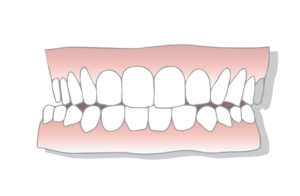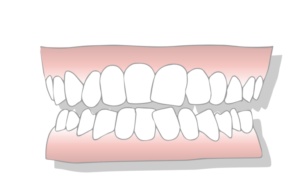Frequently Asked Questions
Early Treatment, Airway, & Expanders
The 2012 study, published in the journal Pediatrics, followed more than 11,000 children for six years, starting when they were 6 months old. The children who had SRBD were 40 percent to 100 percent more likely than kids without breathing issues to develop behavioral problems resembling ADHD by the age of 7. So if your child is exhibiting ADHD-like symptoms — or has even been diagnosed with ADHD — it’s worth considering whether interrupted sleep might be an issue.
It makes perfect sense when you think about it: A well-rested individual, young or old, can function a lot better on a good night’s sleep. Yet a lack of sleep affects adults and children differently. While sleepy adults tend to act sluggish and drowsy, sleep-deprived kids are more likely to become hyperactive, uncooperative and unable to focus — just like kids with ADHD.
So what exactly is SRBD?
The condition is characterized by recurrent episodes of interrupted breathing during sleep. The child’s airway becomes blocked by soft tissues near the back of the throat — tonsils or the tongue, for example — that partially close off the windpipe. These tissues can vibrate as air passes by, causing snoring. It’s often worse while sleeping on one’s back because this encourages the lower jaw to slip back, which in turn pushes the tongue in front of the airway.
Overweight children have a higher incidence of sleep apnea due to fatty tissue deposits in the soft palate, which decrease the size of the child’s airway.
Does your child have a sleep-related breathing disorder? You can gather clues to report to your health professional by observing your child sleeping. Look for the following signs:
- Snoring
- Pauses in breathing
- Chronic mouth breathing
- Constant tossing and turning
- Night panics
- Bed-wetting
How is sleep apnea treated in children?
There are various treatments that can be very effective, depending on the cause. Enlarged tonsils and adenoids can be surgically removed. A therapy known as Continuous Positive Airway Pressure (CPAP) involves the use of a machine that delivers mild air pressure through a mask worn during sleep to keep the airway open.
How palatal expanders work.
Dentistry also can also play a role in treatment. For younger children who are still growing, the use of an orthodontic appliance called a palatal expander has proven helpful in some cases. A palatal expander gently widens the roof of the mouth (palate) over time by separating bones that don’t permanently fuse together until puberty. It’s most often used to create more room for crowded teeth, but the expansion can also increase airflow.
Older children who have stopped growing can sometimes benefit from Oral Appliance Therapy (OAT). This involves wearing a custom-made oral appliance designed to reposition the jaw during sleep so that the tongue is held away from the back of the throat, reducing the potential for obstruction.
The first step is to figure out what’s keeping your child from getting the restful sleep that’s so crucial to good health and well-being. So if you have any questions about sleep apnea, please contact our office or schedule an appointment for a consultation. We can start the process that will determine the best treatment for your child.
A major benefit of receiving orthodontic treatment in childhood is that it’s possible to take full advantage of a youngster’s own natural growth process to treat or even prevent malocclusions (“bad bites”). A palatal expander is a device designed to help us do that.
Palatal expanders create more space in a child’s mouth by gradually widening the upper jaw. Although this may sound scary, it’s really quite easy — both to do and to tolerate. That’s because the upper jaw actually develops as two separate halves that don’t completely fuse together until sometime after puberty. Before that happens, the two bones can gently be separated and stabilized over a period of several months.
The three situations that most commonly call for maxillary expansion are:
Crossbite — When a child’s upper jaw is too narrow to fit correctly with the lower jaw, the back top teeth will bite inside of the lower teeth instead of outside. This can be corrected by expanding the upper jaw.
Crowding — Even before all of a child’s permanent (adult) teeth come in, we can tell when there will not be enough room to accommodate them. Widening the upper jaw can create the necessary space without the need for tooth extractions.
Impacted Teeth — When a tooth that hasn’t come in (erupted) yet and is blocked by other teeth, widening the upper jaw can allow it to erupt into proper position on its own. This most often happens with canine or eye teeth — the pointier ones located directly under the eyes.
Expanding the upper jaw has other benefits: It can broaden the smile in an aesthetically pleasing way, it can limit the number of teeth that need to be removed to create space and can also improve breathing. And it can shorten overall orthodontic treatment time (the amount of time your child will need to wear braces).
How Expanders Work
What to Expect
Types of Appliances and How They Work
Expanders are uniquely made for each patient based on their dental arch and palate size. The devices come in fixed and removable forms. Common types of expanders include:
Rapid Palatal Expander (RPE)
The rapid palatal expander can correct narrow palates, crowding, and crossbites. The appliance fits over a few back teeth in the upper jaw with a screw in the middle. To activate an RPE, you turn the screw a small amount each day with a special key to create tension between the two palatal bones.
The goal is to widen the maxilla (upper jaw), expand the dental arch, and move the teeth within the bone. Over time, the two palatal bones move apart and the jaw widens. Most orthodontists also leave the appliance in for a few months after the desired expansion is achieved to allow new bone to form. In most cases, palate expansion treatment takes 3 to 6 months.
RPEs can widen the upper jaw at a rate of 0.5mm per day. Slow palate expansion can also be achieved by widening the upper jaw at a rate of 0.2mm per week.
Removable Palatal Expander
An orthodontist typically indicates a removable expander when a patient only needs minor jaw widening. These appliances are similar in appearance to acrylic retainers, except they are chrome.
Implant-Supported Expansion
Mature adolescents typically require implant-supported expanders. Once the jaw is almost fully developed, heavier forces are necessary to successfully widen the jaw and palate. This expansion treatment consists of four mini-implants that apply force directly to the maxillary bone, instead of the teeth.
Surgically Assisted Palatal Expansion
Once a person reaches full maturity (puberty), they typically have a fully developed jaw. Although, some jaws do not fully mature until age 21 to 25. If this is the case, an orthodontist must surgically insert an expander into the mid-palatal suture (palate bone).
When is Palate Expansion Necessary?
The three most common circumstances that typically indicate the need for maxillary expansion include:
Impacted Teeth
When a tooth is stuck under the gums and blocked by other teeth, it is an impacted tooth. Dentists recommend extractions to reduce the chance of disease and jaw misalignment. Palate expanders can help widen the jaw and allow for the proper eruption of permanent teeth.
Crossbites

A crossbite is when the upper and lower teeth do not align correctly when biting down. Crossbites occur when some bottom teeth are located outside the upper teeth when the two jaws are closed.
This type of malocclusion can sometimes be corrected with palate expansion treatment.
Crowded Teeth

Over-retained teeth refer to baby teeth that have loosened but then tighten back into the gums, preventing the eruption of permanent teeth.
If the primary teeth are not extracted, dental crowding develops, which is a condition that occurs when there is not enough space for teeth to grow in.
Palate expanders eliminate the need for extractions and create space for permanent teeth to grow in.
Before your child’s adult teeth grow in, an orthodontist can check to see how much room is available in his or her mouth. If the jaw seems too narrow, palate expansion may be necessary to prevent dental crowding as the permanent teeth grow in.
Improved Breathing
Maxillary expansion can also improve breathing ability, which helps prevent mouth-breathing and dry mouth (xerostomia).
Maxillary expansion also treats Class III orthodontic problems. Class III problems are primarily genetic and may include:
- If the lower teeth and jaw are positioned in front of their upper teeth and jaw (underbite).
- If the lower jaw appears to be unusually large. Although, the lack of upper jaw development is usually the actual cause of this abnormality.
Palate expanders also treat maxillary transverse deficiency. Patients with this condition usually have a narrow palate and posterior crossbite. Other indications of maxillary transverse deficiency include:
- Paranasal Hollowing — when the bones of the upper jaw are underdeveloped, the lower jaw excessively protrudes forward.
- Narrow Nasal Base — instead of having wide nostrils, a person with maxillary transverse deficiency may have unusually narrow or thin nostrils.
- Deepened Nasolabial Folds — indentations that extend from the nose to the outer corners of the mouth. The indentations, or lines, are more noticeable when smiling.
- Hypoplastic Zygoma — a person with hypoplastic zygoma has underdeveloped and flattened cheekbones.
- Narrow Tapering Maxillary Arch — an extremely narrow palate (v-shaped).
Indicators for Palate Expansion
Palate expansion can be completed before the end of an adolescent’s growth spurt. Expansion techniques vary depending on the patient’s age. For example, treatment is different for adolescents in the primary dentition phase (baby teeth), early mixed dentition phase (mix of baby teeth and permanent teeth), and early permanent dentition phase (all permanent teeth).
Young Children
Treatment is most effective when the patient’s jaw is still growing. As baby teeth fall out, permanent teeth start to erupt around the same time (age 6). When the mouth consists of some primary teeth and permanent teeth, it is called the “mixed dentition phase.” If a child has a crossbite or crowded teeth during this phase, palate expansion may be necessary.
Children & Pre-Teens
As a child reaches the late mixed dentition phase, which is when there are more permanent teeth in the dental arch than primary teeth, palatal expansion is more difficult. During this phase, the jaw isn’t growing as quickly. It is typically necessary to wait until the first premolars erupt to begin expansion treatment.
Teenagers and Older
As an adolescent’s growth spurt ends, palatal expansion may not be possible because the jaw is almost fully developed. Implant-supported or surgically assisted palatal expansion is typically the only treatment option at this stage because heavier force is needed to expand the jaw. Expansion is more likely to be successful in young children rather than those who have reached mid or late adolescence.
